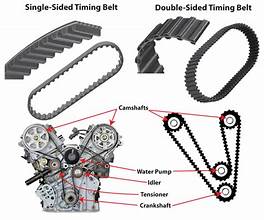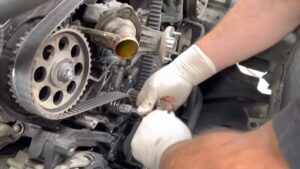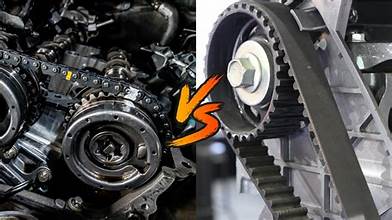Understanding the Importance of Your Vehicle’s Timing Belt A timing belt is a vital component in your car’s engine, playing a crucial role in keeping everything working smoothly. It connects the crankshaft and camshaft, ensuring that the engine’s valves open and close at the right time for efficient combustion. Whether you drive a sedan, SUV, or a high-performance vehicle, the timing belt helps maintain engine performance and prevents major mechanical failures. The timing belt’s main job is to control the movement of the engine’s internal parts. It connects the crankshaft and camshaft, ensuring the pistons and valves work in harmony. When the timing belt is working properly, it allows for smooth engine performance, better fuel efficiency, and reduced emissions. If the timing belt fails, however, the engine may misfire, lose power, or suffer serious damage. Knowing the signs of a bad timing belt can help prevent major engine damage. Here are a few common warning signs: Ticking Noise from the Engine: If you hear a ticking sound, it could be a sign that the timing belt is worn or loose. Engine Misfires: A damaged timing belt can throw off the engine’s timing, causing misfires. Rough Idling or Difficulty Starting: A faulty timing belt can make it harder for the engine to start or run smoothly. Oil Leaks: Worn seals around the timing belt cover might cause oil to leak, which can lead to further damage. Engine Won’t Start: If the timing belt breaks, the engine may not start at all. If you notice any of these issues, it’s important to have your vehicle checked by a professional as soon as possible. Most car manufacturers suggest replacing the timing belt between 60,000 and 100,000 miles. However, the exact mileage can vary depending on your vehicle’s make and model. Some vehicles, especially SUVs, might have timing belts that last longer. Always refer to your vehicle’s owner’s manual or ask a mechanic to find out when you should replace your timing belt. Delaying the replacement of your timing belt can lead to serious engine problems. Unlike some other engine parts, a timing belt doesn’t always show clear warning signs before it breaks. Replacing it at the right time can prevent: Some vehicles use a timing chain instead of a timing belt. Both serve the same purpose, but they’re made from different materials. Timing chains are usually made of metal and last longer than timing belts, but they need regular lubrication and can become noisy over time. Understanding the difference between a timing belt and chain can help you keep your vehicle in good shape. The timing belt is a crucial part of your engine that should never be overlooked. Regular inspections and timely replacements can help you avoid unexpected breakdowns and expensive repairs. If you think your timing belt may need replacing, don’t wait for it to fail. Stay proactive with your vehicle’s maintenance to keep it running smoothly and safely. For example, if you’re in need of a new battery for your car, check out the new battery options here. If you’re looking to upgrade your ride, consider the Changan Deepal S07 for its performance and features. You can explore financing options with the EMI plan here or learn more about the model here. Alternatively, the Karvaan MPV Plus 12MPFI listing and the Changan Oshan X7 Comfort model offer great choices for family vehicles. Remember, by staying on top of maintenance and understanding when to replace your timing belt, you can help ensure a longer lifespan for your engine and enjoy a smoother, safer driving experience.What Does a Timing Belt Do?

Signs of a Bad Timing Belt
When Should You Replace the Timing Belt?

Why Timely Replacement is Essential
Timing Belt vs. Timing Chain
Final Thoughts























